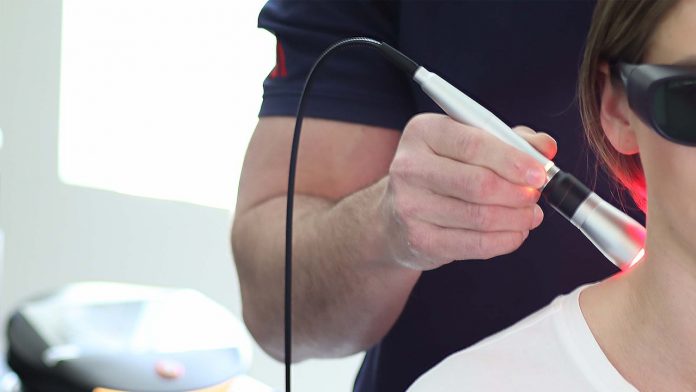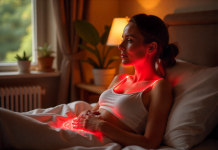Arthritis is a considerable problem that makes joints stiff and causes pain. This health problem affects everyday life for thousands of people globally. Many healthcare providers, including therapists, are now reaping the benefits of laser therapy equipment, which is a painless treatment to reduce stiffness and pain. Effective use of a laser therapy machine can help your patients without causing any unwanted harm.
Laser therapy, sometimes referred to as low-level laser therapy (LLLT) assists in treating a patient’s pain and inflammation caused by arthritis.
Here is a brief overview of easy tips to make your low-level laser therapy device treatments effective for patients suffering with arthritis.
Pick the Right Laser Therapy Machine
Picking the right laser therapy machine is imperative if you want a treatment that is safe and effective. There are a wide range of devices available on the market, with a range of power (output) and wavelengths of light.
Look for these aspects when choosing a laser therapy machine:
- Wavelength: Laser light reaches deeper into the tissues based on the wavelength. For arthritis, 600nm to 1000nm is the ideal range to strike the perfect balance for penetration.
- Power Output: More power can speed up treatment. But too much can be risky. Therefore, make sure the power fits medical use.
- Health Canada Approval: Check that the low-level laser therapy devices are approved for use in Canada by Health Canada and have proper medical certifications.
- Portability: Some machines are small and easy to carry, whereas others are larger. Take your practice needs into consideration.
The right laser tool in your hands will keep your patients safe, making their joints feel better with less pain.
Know How Laser Therapy Helps
Proper training on laser therapy equipment to understand how it works is essential for any therapist. These low-level laser therapy devices emit specific light energy into the cells to stimulate healing, manage inflammation and reduce pain.
Laser therapy helps patients heal with:
- Less Pain: The light enhances blood flow and releases endorphins to relieve pain and swelling.
- Better Healing: It energizes cells to repair tissues and ease stiff joints.
- No Heat: Unlike surgical lasers, a cold laser therapy device doesn’t create much heat, so it is safe for gentle treatment.
Understanding this helps healthcare providers use their low-level laser therapy device more effectively for great patient results.
Check Patients Carefully Before Starting
Before administering laser therapy, healthcare providers must fully check if it is right for the patient. Not everyone with arthritis is a good fit for laser therapy equipment.
Things to look at include:
- Medical History: Evaluate patient’s past and current health issues.
- Arthritis Stage: Laser therapy is most helpful in the early stages.
- Caution: Avoid using cold laser therapy on patients who have cancer, pacemakers, or are expecting a baby. Always check the contraindications listed in the user manual of any Laser Therapy machine that you use.
Your careful steps will ensure a safe and effective treatment for each patient.
Stick to Treatment Rules
Every laser therapy device has its own instructions. Follow these rules closely to get the most from your low-level laser therapy device.
- Dosage: Laser therapy is measured in joules. The right amount depends on the severity of arthritis and the treatment spot.
- Time: Sessions usually last for 5 to 20 minutes per joint, depending on the device’s power.
- Number of Sessions: Most patients require multiple sessions weekly for several weeks to see lasting improvement.
Following these treatment rules, patients can reap the full benefits of laser therapy.
Healing with Safety First Approach
Low-level Laser therapy machines are mostly safe, but as a healthcare provider, you must take steps to ensure safety for both patients and yourself.
Here are the key safety tips:
- Eye Protection: Laser lights can hurt eyes. However, make sure you, your staff, and the patients wear protective glasses while undergoing therapy.
- Avoid Eyes: Do not aim the laser machine at anyone’s eyes, even briefly.
- Watch Skin: Sometimes a patient’s skin gets a bit red. Monitor the treated area for any unusual changes.
- Monitor Machines: Monitor cold laser therapy devices regularly to spot and fix any problems.
These safety habits make laser therapy devices safe and lower the chances of risks.
Explain Treatment to Patients
Patients often hope for a quick fix, but it takes time. Explain clearly to your patients what to expect from the treatment.
Share these points with your patients:
- Slow Relief: Some may feel better after a few sessions, but others may take weeks.
- Number of Sessions: One treatment is not enough. A full set of sessions is important.
- Extra Help: Suggest pairing laser therapy with exercise, physical therapy, and diet adjustments.
Clear communication keeps patients on track and leads to better outcomes.
Keep Educating Yourself
Laser therapy equipment keeps improving with new studies and tools. Therefore, continuous learning is essential for providing the best care.
Steps to stay updated:
Join Training: Workshops and certifications boost skills and knowledge.
Read Studies: New research shows what’s next for low-level laser therapy devices.
Talk to Peers: Sharing ideas with other professionals keeps you sharp.
Staying current helps healthcare providers offer the latest arthritis care.
Conclusion
Using laser therapy equipment is a great and effective way to ease pain and improve joint movement. But for safe and effective outcomes, is it crucial pick the right machine, understand how it works, follow safety steps, and tell patients what to expect.
With these seven easy tips, you can make the most of low-level laser therapy devices while keeping patients happy and safe. As new ideas emerge, staying updated on cold laser therapy devices will help deliver the best care possible.















